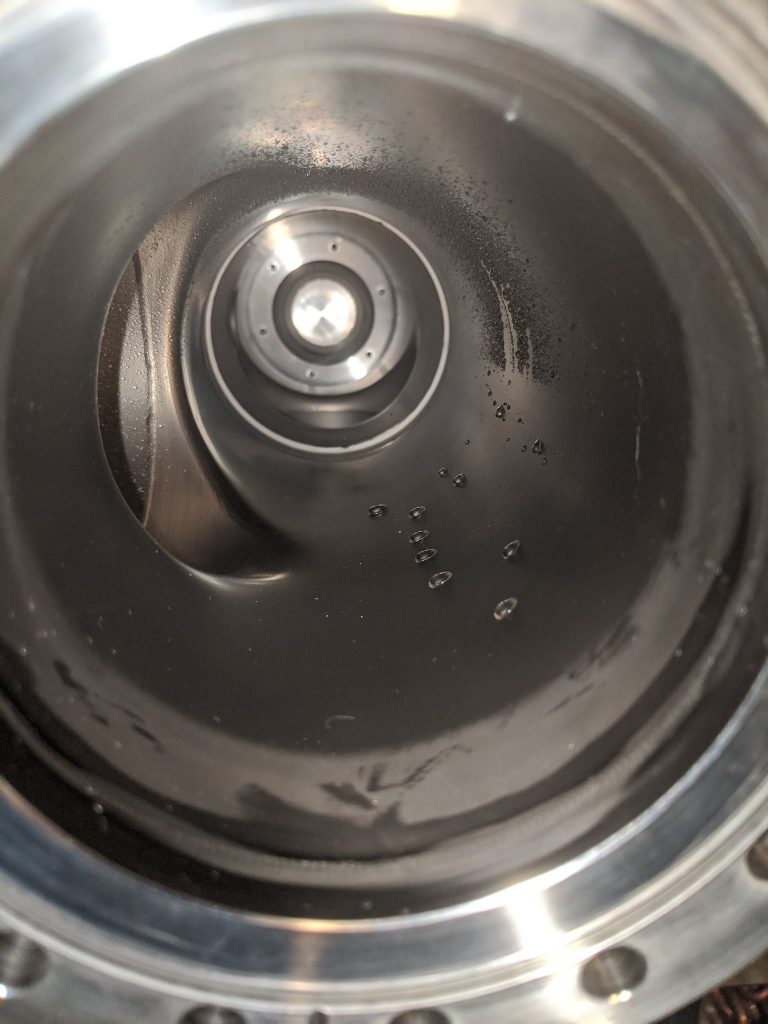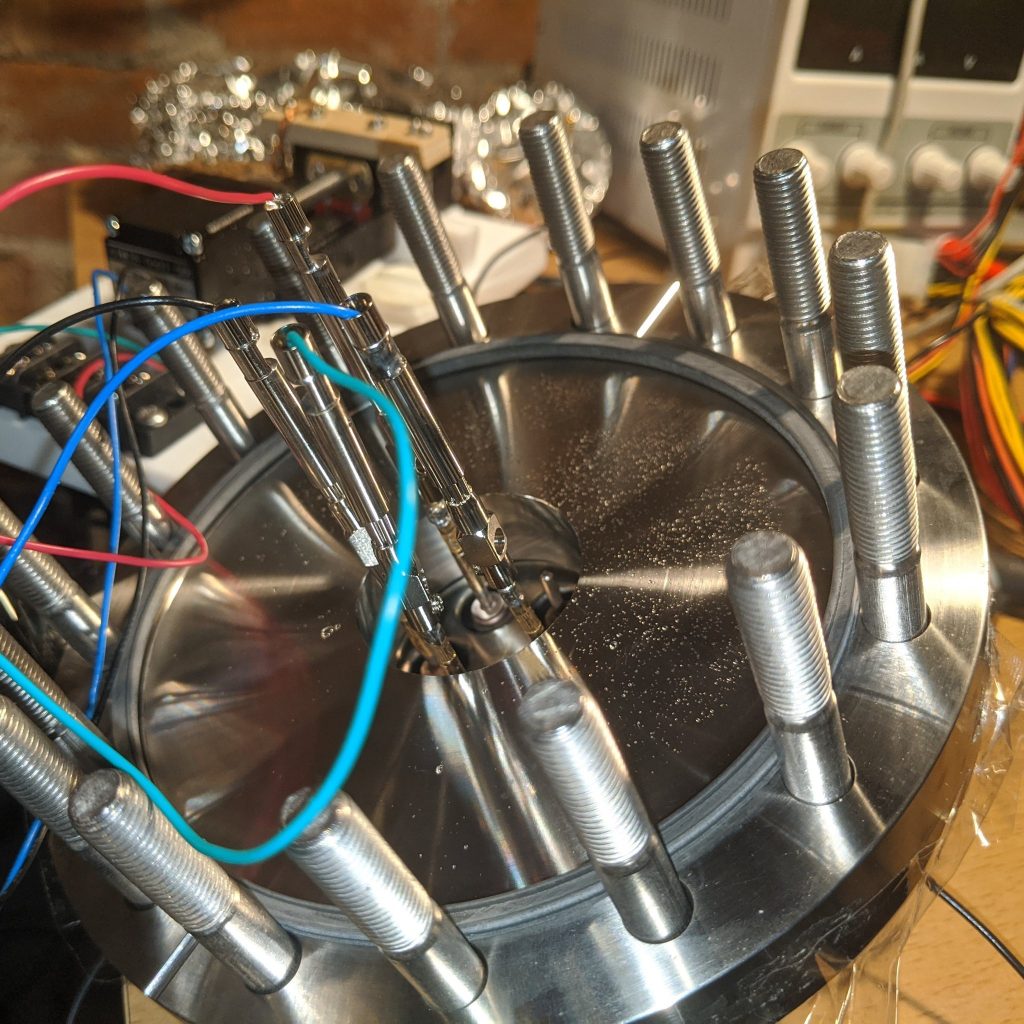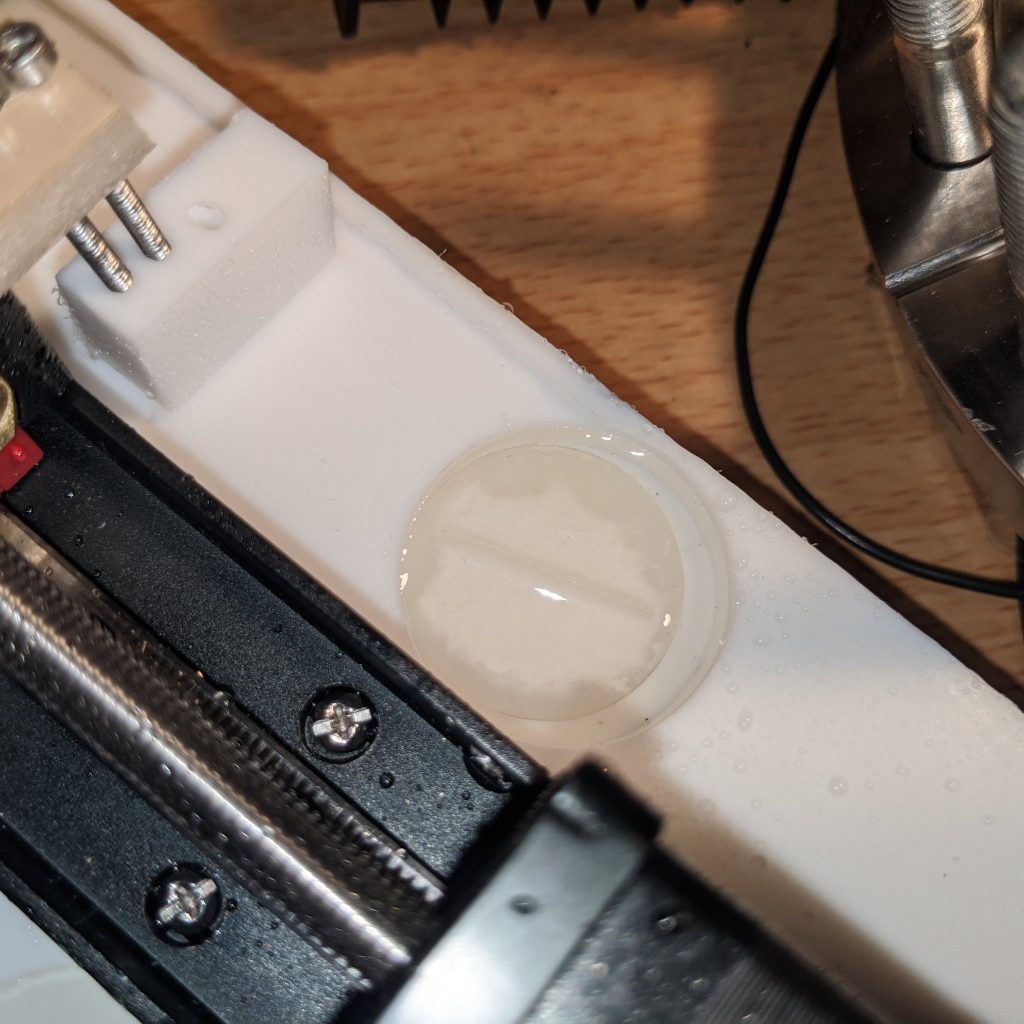After half a year in the making, with the new Edwards RV12 roughing pump, and getting my system back online troubleshooting the last remaining bugs, vacuum capabilities were restored and yesterday, July 4th, 2020 I attempted the first ever fueling and ignition test of the AIS-ILIS1 ionic liquid ion source electrospray thruster. This post will recap the events of the day from the first part of the test, thruster fueling. In my next posts, I will go over thruster test results and outcomes.
The ILIS1 fueling station was first loaded into the high vacuum chamber dry, and tested with the control software to make sure all of the connections were correct.
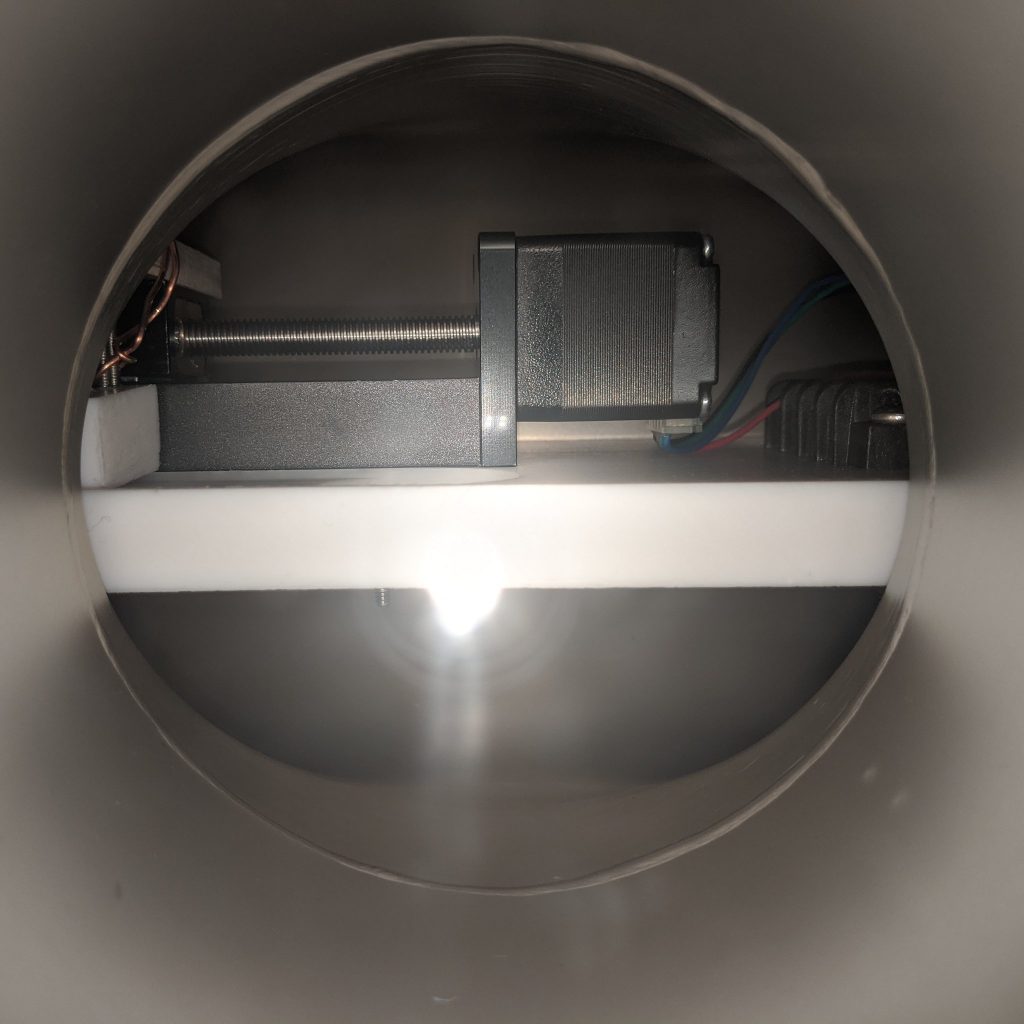
Once wired and checked, the porous glass reservoir and emitter were loaded into the fueling channels, and EMI-BF4 ionic liquid was loaded into the fuel holders. The chamber was sealed, and pumpdown began.
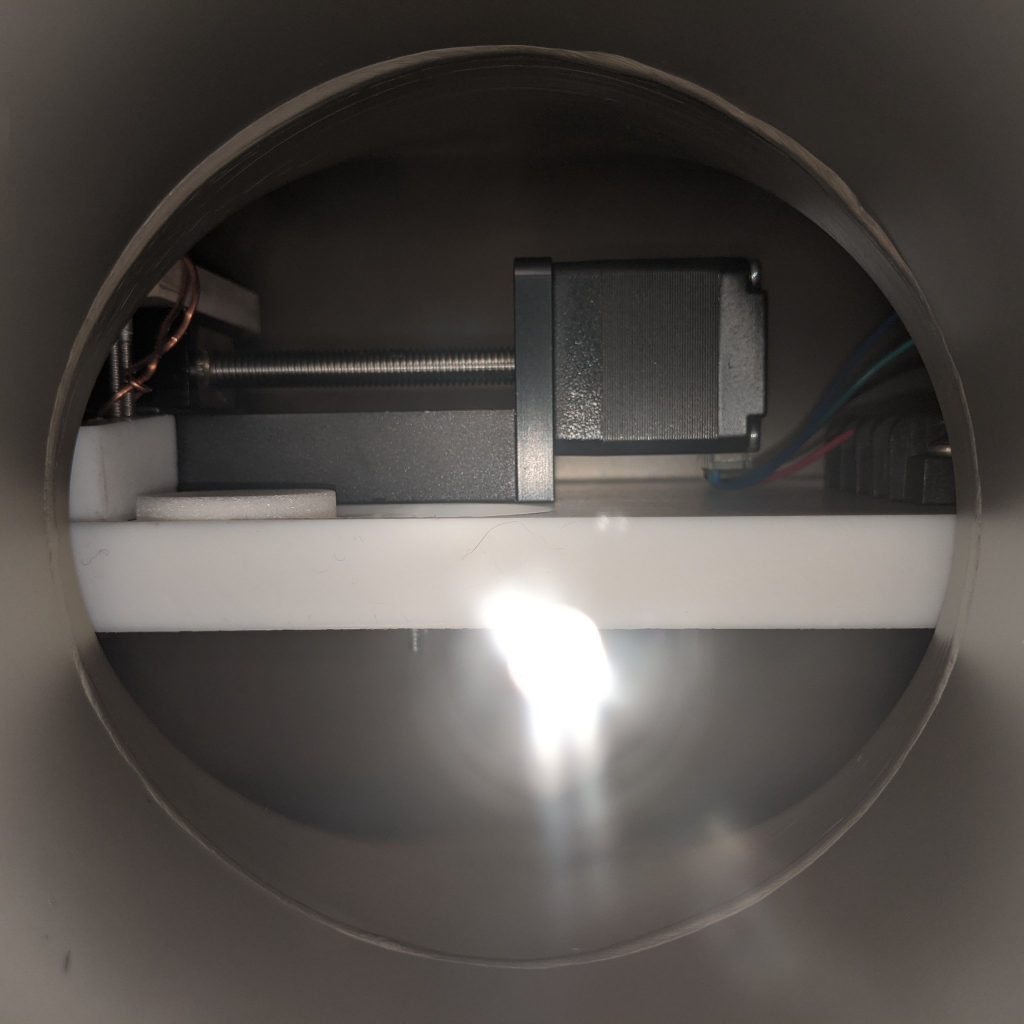
Unfortunately, I was faced with my first immediate and catastrophic setback. Fueled sprayed all over the chamber during the very start of pumpdown. While none of the ionic liquid actually got sucked into the pump, the chamber needed to be opened and thoroughly decontaminated.
Fortunately, the ionic liquid proved to clean up very easily with kimwipes, acetone, and isopropyl. I originally thought the fuel spraying was due to the sudden pressure change from atmosphere to vacuum due to opening the isolation valve from the roughing line to the main chamber. With this in mind, I decided to refuel the station, seal up the system, and pump down very slowly this time, with the roughing valve just barely cracked open and control the rate of drop very carefully.
Unfortunately, this second attempt was also a failure. Despite the very slow pumpdown, at about 1 Torr there were immediate signs of liquid spray in the chamber. I again took the system out of the chamber, and decontaminated the chamber. Despite wanting to degas the glass and fuel separately before loading in vacuum, it was clear that the fuel could not be degassed in an open container. I decided to try saturating the glass in the ionic liquid in atmosphere, and then try pumping down on the loaded glass structures afterwards.
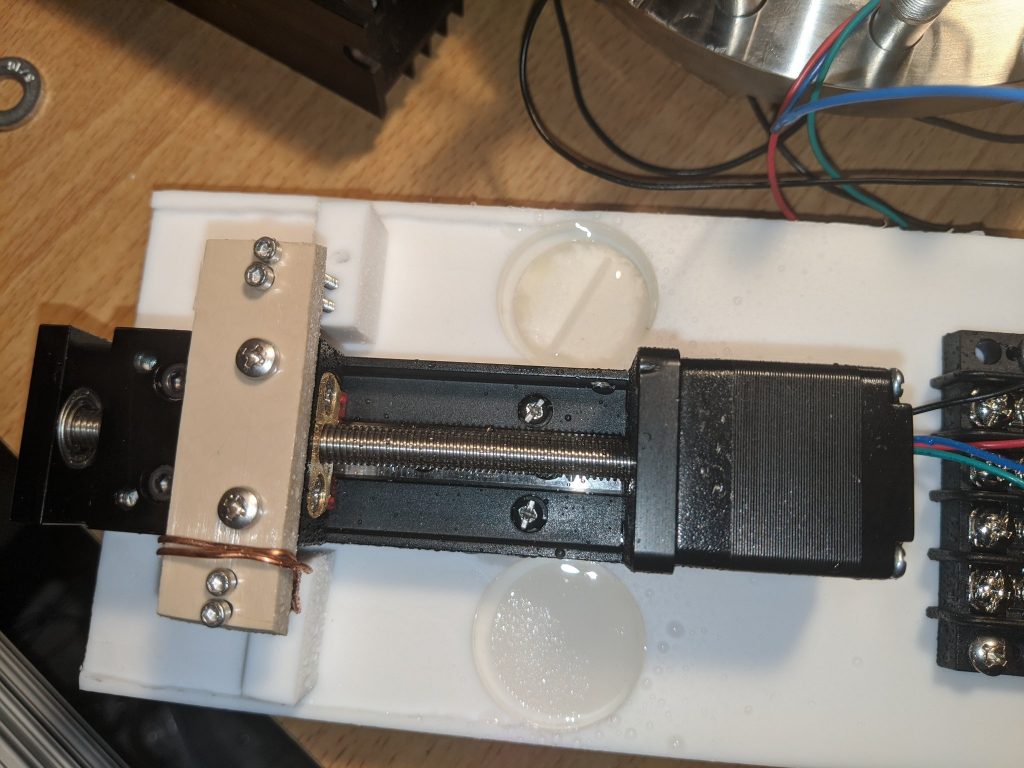
While the larger pores of the reservoir filled without issue, it was immediately apparent that the smaller pores of the emitter was not saturating properly. The ionic liquid is quite viscous, and the central part of the glass emitter was not wicking up the liquid. Unfortunately, the system must still be fueled and degassed in vacuum to fill properly.
The only way to accommodate all of my constraints was to saturate the glass in fuel in vacuum, while preventing liquid from spraying everywhere during degassing. Some quick thinking led me to a very simple solution. Using some empty glass spice containers as beakers, and covering the top with aluminum foil, I could degas the liquid and saturate the reservoir and emitter in vacuum, without worrying about liquid spraying everywhere. The aluminum foil was not placed on very tightly, allowing gas to escape the container while blocking liquid spray.
This fourth fueling attempt finally paid off! It turns out that the fuel spray was actually due to very violent degassing of the liquid, which holds a large amount of air and water vapor. Bubbling was very violent during roughing, and almost blew the aluminum foil lid off several times! However, no liquid escaped. Success!
With the initial success of degassing at low vacuum, the diffusion pump was turned on, and degassing progressed at full vacuum. After several hours of pumping, the system finally reached an ultimate vacuum in the upper 10^-6 Torr range, signifying the bulk of gases and water vapor have been pulled out of the system. With that, the system was shut down, and preparations were made for the ignition test.
In the next post, I will review the first ever AIS-ILIS1 ignition test!


